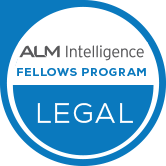Talent is Your Biggest Asset – All of the Talent
Law firm leaders that value people as the ultimate asset will optimize a rich, and largely untapped, opportunity to drive sustainable growth.
June 27, 2018 at 09:29 AM
4 minute read
 It's our people; they're our biggest asset.” “ Talent is the only sustainable source of competitive advantage. Humans as an Asset value. appreciate Law firm leaders that value people as the ultimate asset will optimize a rich, and largely untapped, opportunity to drive sustainable growth. Here's the Problem directly Realize—and Cultivate—What You Have and treating them
It's our people; they're our biggest asset.” “ Talent is the only sustainable source of competitive advantage. Humans as an Asset value. appreciate Law firm leaders that value people as the ultimate asset will optimize a rich, and largely untapped, opportunity to drive sustainable growth. Here's the Problem directly Realize—and Cultivate—What You Have and treating them - Truly know your people. Start by taking a “forensic look” at your business services professionals, their capabilities, interests and locations. Conduct skill assessments and gauge development potential. Compile all of this data, which can help to identify and address existing gaps, deploy the people you have more effectively, prepare them for future needs, and reduce the costs of duplicating talent. You can use predictive analytics to better understand who you have, where they are, what they are good at and the work they aspire to do. Then you can harness the power of the data to reconfigure and significantly improve how your organization handles each phase of the talent life cycle.
- Use technology to enhance your talent strategies. It is exciting to think that new technologies can help you make smarter hires using insights on the kinds of people who will succeed in your organization and culture. You can increase retention by using insights from employee surveys to help you understand the drivers of employee engagement. Technology can help improve ongoing training and development by aligning people's skillsets with the tasks needed to achieve organizational goals now and in the future; it can also optimize performance management if you incorporate metrics into employee reviews. Moreover, technology can guide succession planning by ensuring the next generation of leaders is motivated and equipped to succeed.
- Embrace networked organizational models. A senior people analytics leader at Capital One suggested that many ultra- productive organizations are moving away from traditional models, with their rigid reliance on reporting relationships and boundaries, and tapping “invisible networks” based on how work typically gets (and should be) done. These new models also use technologically yielded insights to help people slide in and out of projects based on their skill sets, interest levels, and geographic locations. As consultants at Deloitte suggest, you can maintain and refer to a “human capital balance sheet” based on your current needs and assemble a team best suited to carry out specific projects. For example, a project to define a law firm's culture would involve not only attorneys but also pull the right people from human resources, information technology, finance, marketing and business development, and more. One prominent International law firm just adopted an organizational model within their marketing and business development team that customizes and deploys multi-skilled groups to execute on projects for its client response teams. Among other benefits, models such as this help efficiently corral enterprise-wide knowledge of all kinds, eliminate duplicative work, reduce costs associated with external providers who would perform tasks that could be done by existing staff, and imbue the formerly overlooked business services teams – and the broader firm itself – with a sense of shared ownership. And the individual connections thus established will be more likely to endure, continue to bear fruit and improve future results than if everyone had remained in their individual silos.
 here
hereThis content has been archived. It is available through our partners, LexisNexis® and Bloomberg Law.
To view this content, please continue to their sites.
Not a Lexis Subscriber?
Subscribe Now
Not a Bloomberg Law Subscriber?
Subscribe Now
NOT FOR REPRINT
© 2025 ALM Global, LLC, All Rights Reserved. Request academic re-use from www.copyright.com. All other uses, submit a request to [email protected]. For more information visit Asset & Logo Licensing.
You Might Like
View All



Trending Stories
- 1Paul Hastings, Recruiting From Davis Polk, Continues Finance Practice Build
- 2Chancery: Common Stock Worthless in 'Jacobson v. Akademos' and Transaction Was Entirely Fair
- 3'We Neither Like Nor Dislike the Fifth Circuit'
- 4Local Boutique Expands Significantly, Hiring Litigator Who Won $63M Verdict Against City of Miami Commissioner
- 5Senior Associates' Billing Rates See The Biggest Jump
Who Got The Work
J. Brugh Lower of Gibbons has entered an appearance for industrial equipment supplier Devco Corporation in a pending trademark infringement lawsuit. The suit, accusing the defendant of selling knock-off Graco products, was filed Dec. 18 in New Jersey District Court by Rivkin Radler on behalf of Graco Inc. and Graco Minnesota. The case, assigned to U.S. District Judge Zahid N. Quraishi, is 3:24-cv-11294, Graco Inc. et al v. Devco Corporation.
Who Got The Work
Rebecca Maller-Stein and Kent A. Yalowitz of Arnold & Porter Kaye Scholer have entered their appearances for Hanaco Venture Capital and its executives, Lior Prosor and David Frankel, in a pending securities lawsuit. The action, filed on Dec. 24 in New York Southern District Court by Zell, Aron & Co. on behalf of Goldeneye Advisors, accuses the defendants of negligently and fraudulently managing the plaintiff's $1 million investment. The case, assigned to U.S. District Judge Vernon S. Broderick, is 1:24-cv-09918, Goldeneye Advisors, LLC v. Hanaco Venture Capital, Ltd. et al.
Who Got The Work
Attorneys from A&O Shearman has stepped in as defense counsel for Toronto-Dominion Bank and other defendants in a pending securities class action. The suit, filed Dec. 11 in New York Southern District Court by Bleichmar Fonti & Auld, accuses the defendants of concealing the bank's 'pervasive' deficiencies in regards to its compliance with the Bank Secrecy Act and the quality of its anti-money laundering controls. The case, assigned to U.S. District Judge Arun Subramanian, is 1:24-cv-09445, Gonzalez v. The Toronto-Dominion Bank et al.
Who Got The Work
Crown Castle International, a Pennsylvania company providing shared communications infrastructure, has turned to Luke D. Wolf of Gordon Rees Scully Mansukhani to fend off a pending breach-of-contract lawsuit. The court action, filed Nov. 25 in Michigan Eastern District Court by Hooper Hathaway PC on behalf of The Town Residences LLC, accuses Crown Castle of failing to transfer approximately $30,000 in utility payments from T-Mobile in breach of a roof-top lease and assignment agreement. The case, assigned to U.S. District Judge Susan K. Declercq, is 2:24-cv-13131, The Town Residences LLC v. T-Mobile US, Inc. et al.
Who Got The Work
Wilfred P. Coronato and Daniel M. Schwartz of McCarter & English have stepped in as defense counsel to Electrolux Home Products Inc. in a pending product liability lawsuit. The court action, filed Nov. 26 in New York Eastern District Court by Poulos Lopiccolo PC and Nagel Rice LLP on behalf of David Stern, alleges that the defendant's refrigerators’ drawers and shelving repeatedly break and fall apart within months after purchase. The case, assigned to U.S. District Judge Joan M. Azrack, is 2:24-cv-08204, Stern v. Electrolux Home Products, Inc.
Featured Firms
Law Offices of Gary Martin Hays & Associates, P.C.
(470) 294-1674
Law Offices of Mark E. Salomone
(857) 444-6468
Smith & Hassler
(713) 739-1250








